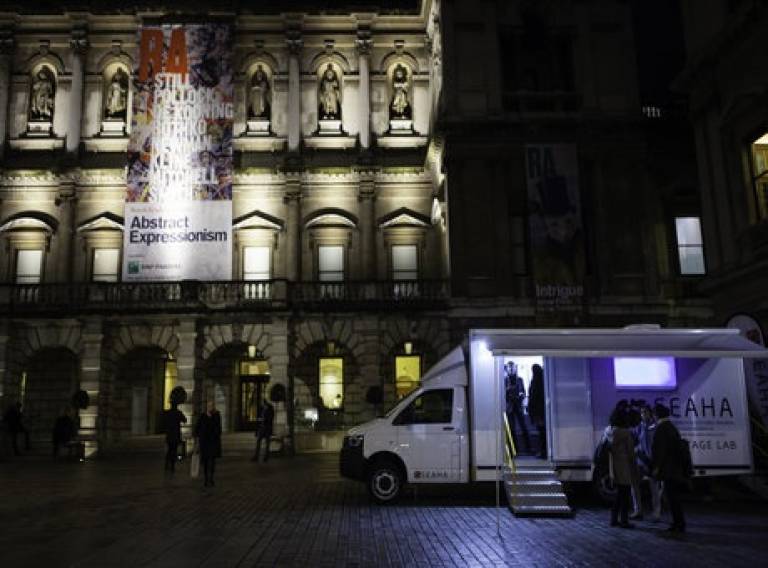SEAHA students run workshop on Science in Art for schoolchildren
16 November 2016

On Friday 4 November, students from the EPSRC Centre for Doctoral Training (CDT) in Science and Engineering in Arts, Heritage and Archaeology (SEAHA) collaborated with the Royal Society of Chemistry to hold a Science in Art workshop for school children at Burlington House, London.
Joined by the Mobile Heritage Lab, four groups of SEAHA students presented to 65 children on a variety of topics, all of which included a practical demonstration which they could participate in. This one-day workshop gave the children an opportunity to further experience practical applications of the knowledge they are taught in school.
During the morning session SEAHA students Martin Michette, Danae Pocobelli, and Alexandra Bridarolli discussed the role that acid rain plays in the decay of our built heritage and informed students about the value judgements professionals must make when conserving these objects. During her talk, Hayley Simon discussed the different decay mechanisms between objects found within marine and earthen environments; her demonstration allowed children to ‘excavate’ samples and explore how they might have decayed.
After lunch the children heard presentations from Anna Pokorska and Sarah Hunt who spoke about the many ways in which wavelengths of light can be used to examine artworks. They demonstrated how underdrawings can be viewed via IR reflectography, how FTIR helps distinguish different material types and how UV light can be used to highlight differences on painted and varnished surfaces.
The final presentation was given by Yun Liu, Hend Mahgoub, and Natalie Brown who informed students about the damaging effect of Iron Gall Ink. During the demonstration the children were invited to make up their own ink from historic recipes and discuss the differences between them.
Mark Kearney, second year SEAHA doctoral student and organiser of the event, said:
“A key aim of the SEAHA CDT is to engage the public and show the novel and cutting edge scientific methods used by its students to study and interpret heritage. Collaborations such as this help the presenters build up experience speaking and also help develop a professional network outside of heritage science.”
Header Image: SEAHA Mobile Heritage Lab in the courtyard of Burlington House, London.
Notes to editors:
For media enquiries please contact Alex Blackburn on a.blackburn@ucl.ac.uk or 0203 108 9860
 Close
Close

